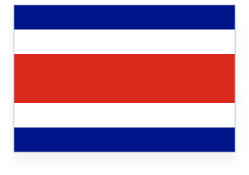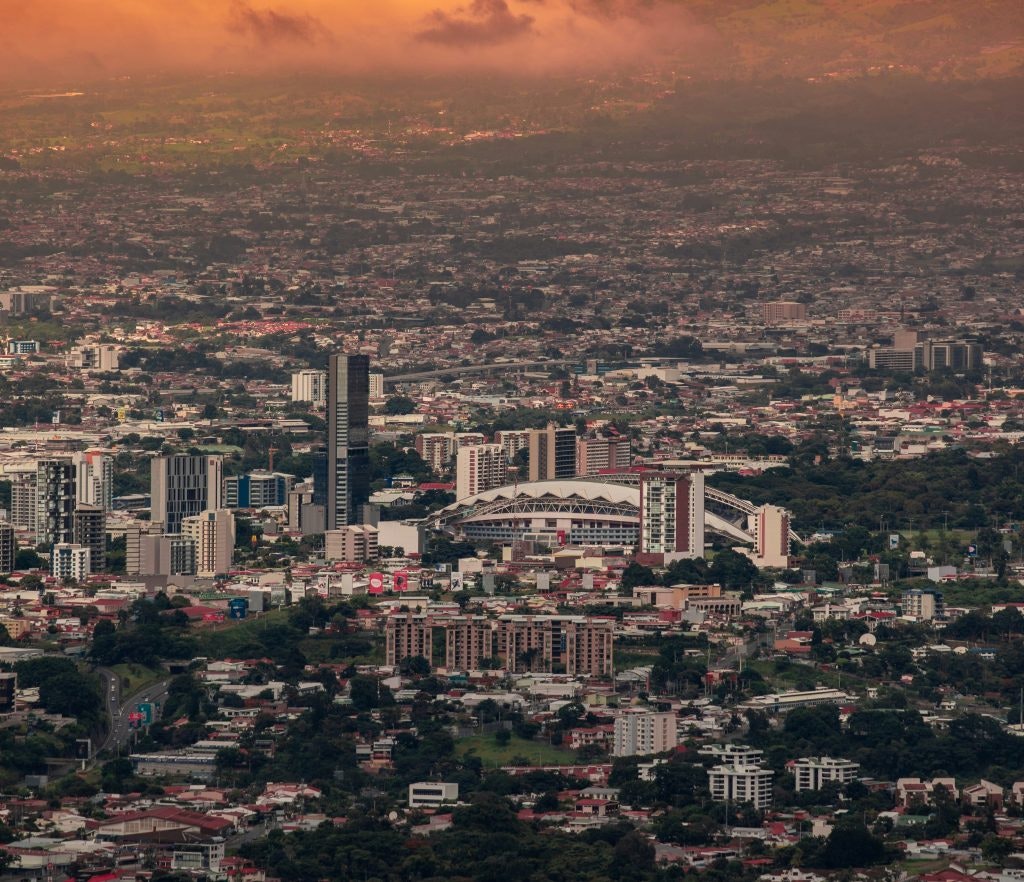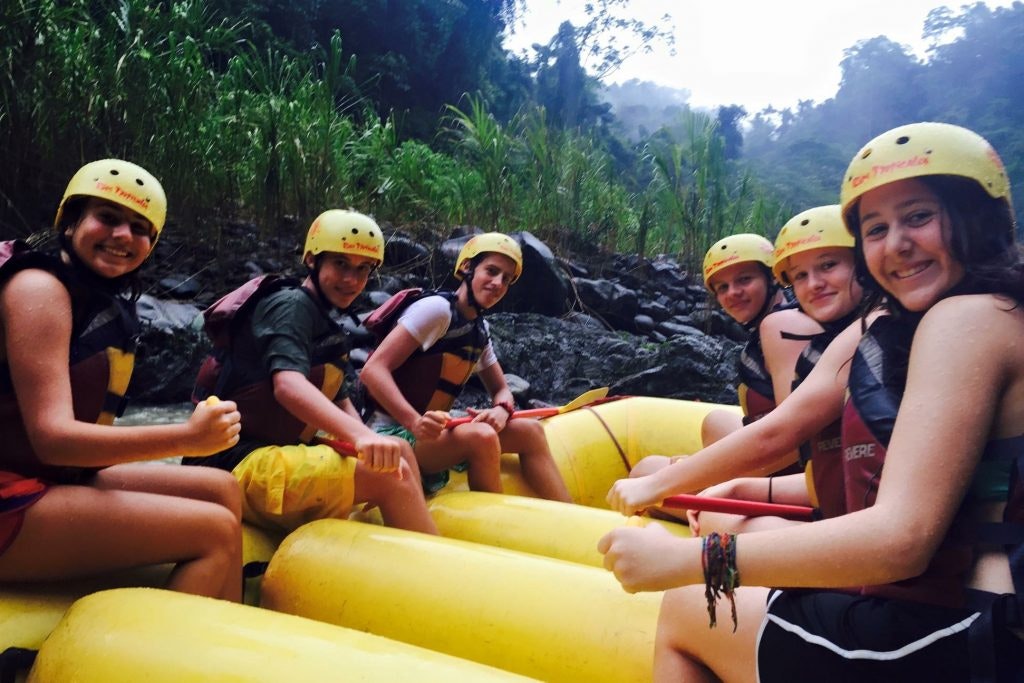







If you’ve never been to Central America, you should consider Costa Rica!
Costa Rica is a perfect destination for a teen tour, where students can listen to the beautiful sound of howler monkeys striding through the trees or feel the wind on their face as they zipline through the cloud forest. In addition, students can learn about conservation directly from the people who protect Costa Rica’s ecosystem.
My personal favorite thing to do in Costa Rica? Have some fresh mango after a long hike.
If you’re thinking about visiting or just want to learn more, here are some fun facts about Costa Rica.
Key Takeaways

Located in Central America, between Nicaragua and Panama, Costa Rica has a Pacific coast and a Caribbean coast. Costa Rica was so named by the explorer Christopher Columbus, who saw native Costa Ricans wearing gold jewelry and was convinced the land was a “rich coast.”
The Costa Rican government includes no standing army. Costa Rica is one of only five countries in the world to have no military force, the others being Iceland, Mauritius, Panama and Vanuatu. After the country’s civil war ended, the President abolished the military on 1 December 1948.
Costa Rica had already abolished the death penalty in 1877. In 1882, it enshrined this in its Constitution, which states, “Human lives are inalienable.”

San Jose, Costa Rica
Costa Rica’s government and political stability have earned it the nickname “The Switzerland of Central America.” Costa Rica ranks third in Latin America and the Caribbean for press freedom. Costa Ricans are required to actively participate in the democratic process. However, the country does not enforce this requirement. (In case you were wondering, Brazil is a country that does enforce its voting requirement.) So, the average voter turnout for a presidential election in recent years has been in the high 60s.
Costa Rica is also one of the few countries in the world which has had a female president, having elected Laura Chinchilla to serve between 2010 and 2014.
Most Costa Ricans live in a small area called the Central Valley, which includes the capital city of San Jose. Of the country’s population of just over 5 million, more than 2 million live in the Central Valley, despite it accounting for just 4% of Costa Rica’s total land area. Almost all Costa Ricans are literate, a likely result of its universal public education dating back to the late 19th century.

Students help protect Sea Turtles on the Costa Rica: Turtle Conservation Project
And we do mean packed! Costa Rica is home to 5% of the world’s biodiversity, despite covering only 0.03% of the Earth’s surface.
With 12 ecological zones and over 100 national parks, reserves, refuges and protected lands, Costa Rica is dedicated to protecting and preserving its ecological diversity. Over 25% of Costa Rica’s land is dedicated to national parks and protected areas. These areas are strategically laid out. Costa Rica’s unique biological corridor system connects protected areas to promote wildlife movement across the country. Some standout reserves and refuges in Costa Rica include:
Many species of animal call Costa Rica home – some their only home. These include:
Costa Ricans routinely top the charts for the happiest and longest living people in the world. According to the Happy Planet Index in 2024, Costa Rica has been the top since 2009 and is now in 4th place worldwide. Its unofficial slogan is “pura vida,” or pure life, a simple expression of its cheerful outlook on the world.
In 2024, the life expectancy for Costa Ricans was more than 81 years. The Nicoya Peninsula in Costa Rica is one of the world’s five so-called Blue Zones, areas where people live significantly longer lives. The other four are: Okinawa, Japan; Sardinia, Italy; Ikaria, Greece; and Loma Linda, California (USA). It is said that the Nicoyan diet, which emphasizes corn, squash and beans; strong social networks; physical activity; and a sunny outlook on life contribute to Nicoyans’ longevity.

Students have some fun over dinner on Spanish Language Immersion in Costa Rica with a local host family.
Costa Rican people certainly eat fresh and eat local. Costa Rica produces more than 90% of its own fresh produce, selling it in abundant local markets. The well-balanced Costa Rican diet relies on abundant produce, as well as fish and local meats, and gallo pinto (beans and rice). Costa Ricans also enjoy a well-rounded lifestyle, with arts, music and sports integrated into the pura vida lifestyle:
99% renewable energy in recent years, primarily hydroelectric, wind and geothermal power. However, this has been challenged by drought, as two-thirds of the energy production in Costa Rica has been hydroelectric. The year 2023 was one of the most difficult years for the Costa Rican government and its commitment to renewable energy. Record high temperatures contributed to a higher demand for electricity, while a lack of rainfall forced Costa Rica to rely more heavily on fossil fuels to meet its energy needs.
Costa Rica has many eco-lodges, wildlife reserves and tour operators committed to minimizing tourism’s environmental impact across the great range of terrains in the country:
As a result, Costa Rica is a renowned destination for zip-lining, with numerous exhilarating canopy tours across the country. Costa Rica’s rugged landscapes are perfect for adrenaline-pumping mountain biking trails. The country’s diverse coastal geography provides excellent opportunities for surfing, attracting enthusiasts from around the world.

Whitewater rafting is one of the many thrilling activities available in Costa Rica.
Moreover, the production and brewing of coffee beans has been a significant part of the culture and economy of Costa Rica for over 200 years. A popular destination for coffee drinkers to experience coffee is Starbucks’s Hacienda Alsacia, the company’s only coffee farm, which is located about an hour away from San Jose.
Whether these Costa Rica facts move you to book a trip for the first time or make you feel nostalgic about your next trip to the rich coast, we wish you happiness and good health. Put the national flower, a guaria morada in your hair, sing the national anthem and enjoy the good life!
Read more:
💡 Want more trivia?
Browse all Fun Facts articles.
Yes! Costa Rica is known for being a peaceful nation with no standing army and a stable democracy. It’s often called “The Switzerland of Central America” and has a long-standing commitment to human rights, education, and environmental protection.
Costa Rica is one of the most biodiverse countries in the world, home to:
The country is a dream for adventure lovers. Popular activities include: